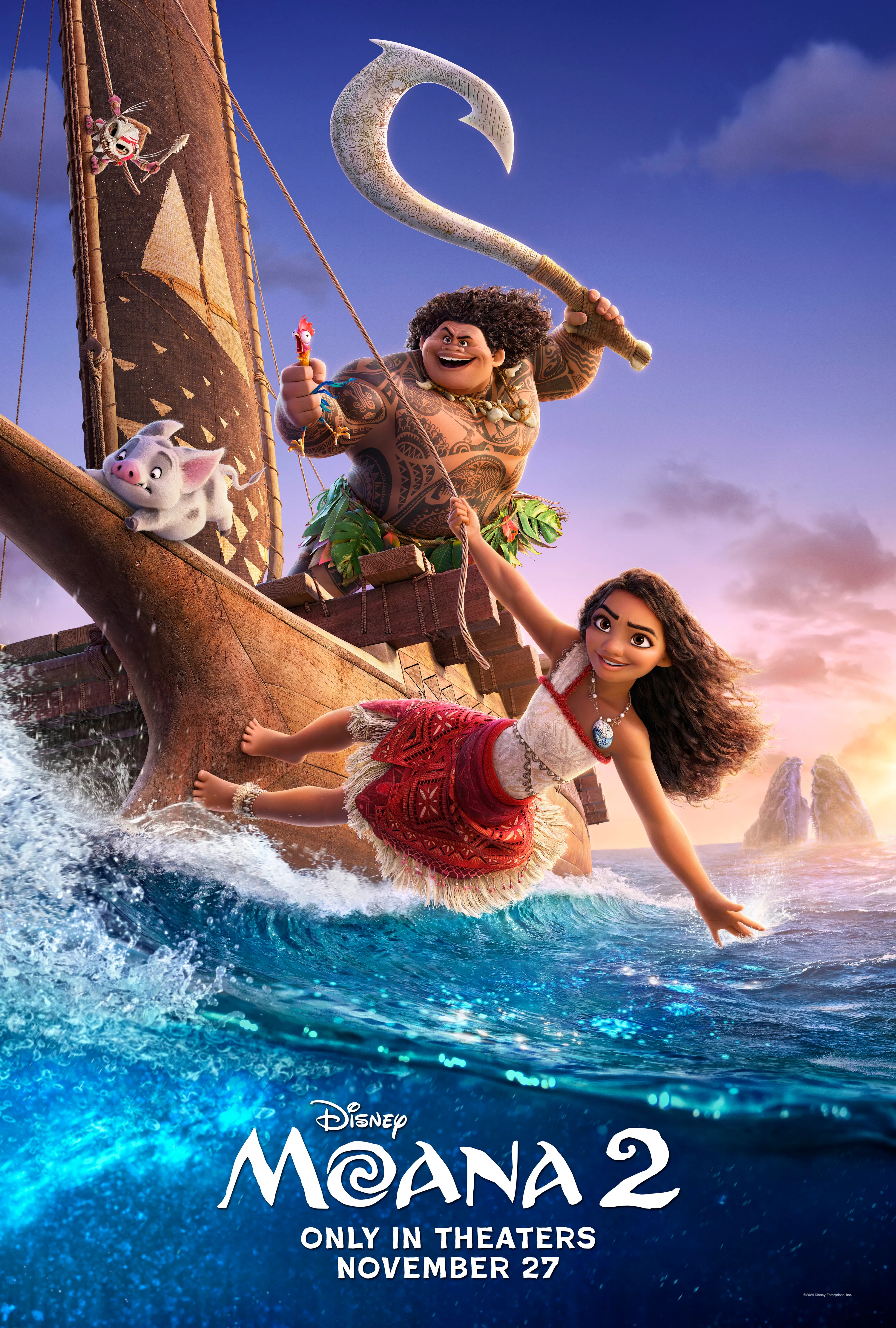Unit B
Activity 2
The changing tide of representation
Ressource affichée de l'autre côté.
Faites défiler pour voir la suite.
Faites défiler pour voir la suite.
Texte
The Conversation
Moana isn't a typical Disney heroine, stating quite clearly in the latest instalment, Moana 2, that she is not a princess. [...] This shows just how much Moana has redefined what it means to be a Disney princess. Unconcerned with traditional tropes like ballgowns and romance, Moana embodies strength, independence and a deep commitment to environmental stewardship. She powerfully demonstrates how human action can effect real environmental healing and transformation. [...]
Moana, of course, shares several traits with earlier Disney princesses. Like Belle from Beauty and the Beast and Jasmine from Aladdin, she dreams of a life beyond the confines of her immediate world. Similar to Ariel from The Little Mermaid and Mulan, she sets off on a dangerous adventure far from home. And like all the princesses before her, Moana has animal companions – Pua the pig and Hei-Hei the chicken. But what sets Moana apart is how her connection to nature is portrayed.
Disney has a long legacy of linking its princesses with nature, from Snow White and Cinderella, who recruit small animals to assist with their domestic chores, to Elsa in Frozen who can magically control ice and snow. But Moana's relationship with the natural world is more than just symbolic interaction. Her bond with nature is an active, collaborative partnership. This is not a typical Disney princess story of self-discovery, but of active engagement with the world around her. In the first film, Moana embarks on a dangerous oceanic journey to “restore the heart of Te Fiti”. [...] In the sequel, Moana is more mature, more experienced as a wayfinder, and is a highly respected member of her island community. This new story sees her lead a group of fellow islanders on a voyage to find the lost island of Motufetu and reconnect isolated island communities across the ocean. Through this, she demonstrates the power of collective action.
Moana, of course, shares several traits with earlier Disney princesses. Like Belle from Beauty and the Beast and Jasmine from Aladdin, she dreams of a life beyond the confines of her immediate world. Similar to Ariel from The Little Mermaid and Mulan, she sets off on a dangerous adventure far from home. And like all the princesses before her, Moana has animal companions – Pua the pig and Hei-Hei the chicken. But what sets Moana apart is how her connection to nature is portrayed.
Disney has a long legacy of linking its princesses with nature, from Snow White and Cinderella, who recruit small animals to assist with their domestic chores, to Elsa in Frozen who can magically control ice and snow. But Moana's relationship with the natural world is more than just symbolic interaction. Her bond with nature is an active, collaborative partnership. This is not a typical Disney princess story of self-discovery, but of active engagement with the world around her. In the first film, Moana embarks on a dangerous oceanic journey to “restore the heart of Te Fiti”. [...] In the sequel, Moana is more mature, more experienced as a wayfinder, and is a highly respected member of her island community. This new story sees her lead a group of fellow islanders on a voyage to find the lost island of Motufetu and reconnect isolated island communities across the ocean. Through this, she demonstrates the power of collective action.
Ressource affichée de l'autre côté.
Faites défiler pour voir la suite.
Faites défiler pour voir la suite.


Ressource affichée de l'autre côté.
Faites défiler pour voir la suite.
Faites défiler pour voir la suite.
Path A
A2+
1-A
Pick out the three main characteristics of Moana that set her apart from traditional Disney princesses.
2-A
List the Disney princesses Moana shares traits with.
3-A
Find an example in the text where Moana works with nature.
Ressource affichée de l'autre côté.
Faites défiler pour voir la suite.
Faites défiler pour voir la suite.
Path B
B1+
1-B
Pick out words describing Moana's qualities. How do they contribute to her role as a leader?
2-B
Compare Moana's relationship with nature to that of previous Disney princesses.
3-B
Explain why Moana says that she is not a princess. What other words can be used to describe her?
Ressource affichée de l'autre côté.
Faites défiler pour voir la suite.
Faites défiler pour voir la suite.
Let's talk this out!
4
How does the shift from a “princess” to a “wayfinder” (l. 19) change the way we think about female heroes in films? Do you think this reflects changes in society's views on women's roles?
5
Imagine Moana in a traditional Disney princess role. How would that change the story? What would be lost?
Ressource affichée de l'autre côté.
Faites défiler pour voir la suite.
Faites défiler pour voir la suite.
Challenge traditional stereotypes
Create a Disney princess or prince and think about the qualities, traits, and values that this new character should embody in today's world. Consider issues such as gender equality, environmental consciousness, leadership, cultural diversity, and social responsibility. Present your character to the class.
Create a Disney princess or prince and think about the qualities, traits, and values that this new character should embody in today's world. Consider issues such as gender equality, environmental consciousness, leadership, cultural diversity, and social responsibility. Present your character to the class.
Cliquez pour accéder à un module d'enregistrement audio
Enregistreur audio
Une erreur sur la page ? Une idée à proposer ?
Nos manuels sont collaboratifs, n'hésitez pas à nous en faire part.
j'ai une idée !
Oups, une coquille
